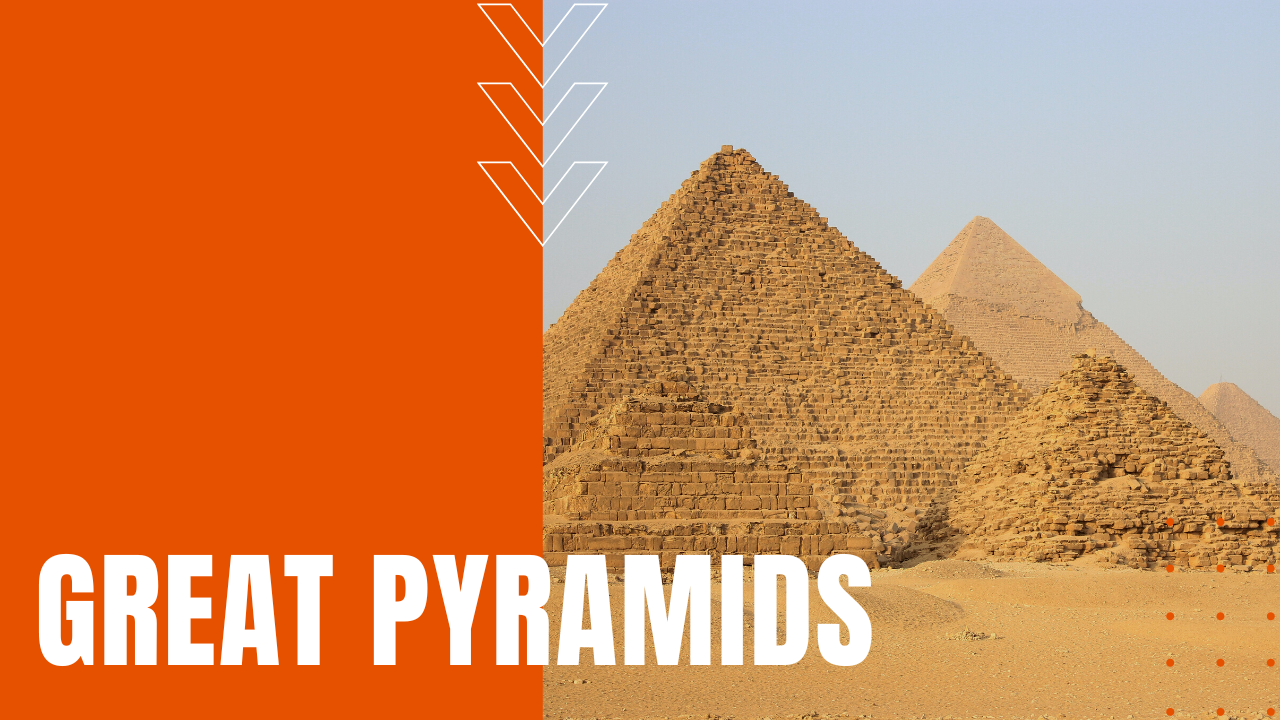Great Pyramids of Giza: Purpose, Construction and History

Religion and Death in Ancient Egypt
26 centuries before Christ, Egyptians believed that a king was an earthly mouthpiece of the gods—most notably Ra the sun god—which meant that when a king passed away, his spirit or “ka” remained in his body.
To properly prepare a dead king for his afterlife, his body was mummified before being placed in his pyramid sarcophagus, along with food, precious metals and other essentials the king and his relatives, officials and priests would need for a successful afterlife.
While early versions of pyramids—known as mastabas—were in use by the third and fourth dynasties of the Old Kingdom of Egypt, the most celebrated of all are the Great Pyramids of Giza, built on the west bank of the Nile River near present-day Cairo.
Why Were The Pyramids in Giza Built?
Originally built with smooth angled sides, symbolizing rays of sunlight intended to aid a king’s ascent into heaven, of the three pyramids at Giza, the Great Pyramid is the only surviving structure of the famed Seven Wonders of the Ancient World. Built for Pharaoh Khufu whose 23-year reign went from 2589 to 2566 B.C., the pyramid’s base sides are 756 feet long, towering up to an original height of 481 feet, although its smooth limestone finish has long been pilfered and reduced in height by centuries of tomb raiders.
Small Pyramids, Sphinx and Mastabas
Three smaller pyramids beside the Great Pyramid were tombs for Khufu’s queens and mother, while smaller rows of mastabas housed the bodies of the king’s officials and relatives who accompanied and supported him in the afterlife.
The middle pyramid is the resting place for Khufu’s son Pharaoh Khafre—as well as home to the Great Sphinx—while the southernmost pyramid was built for Khafre’s son Menkaure. While many histories of the Great Pyramid’s construction involve the use of slaves and foreign prisoners, excavated skeletons near the pyramids indicate that the workers were most likely native Egyptian farmers, who built the pyramids when the Nile River flooded the rich farmlands along her banks.
How Were The Great Pyramids Built?
Archaeological evidence suggests an active workforce of some 20,000 laborers, who cut, transported and assembled some 2.3 million blocks of stone, weighing 2.5 tons each, while an earlier construction account by ancient Greek historian Herodotus wrote that the Great pyramid’s 20-year build required a labor force of some 100,000 men, making the Great Pyramids of Giza, the world’s tallest manmade objects for more than 3,800 years to come.
